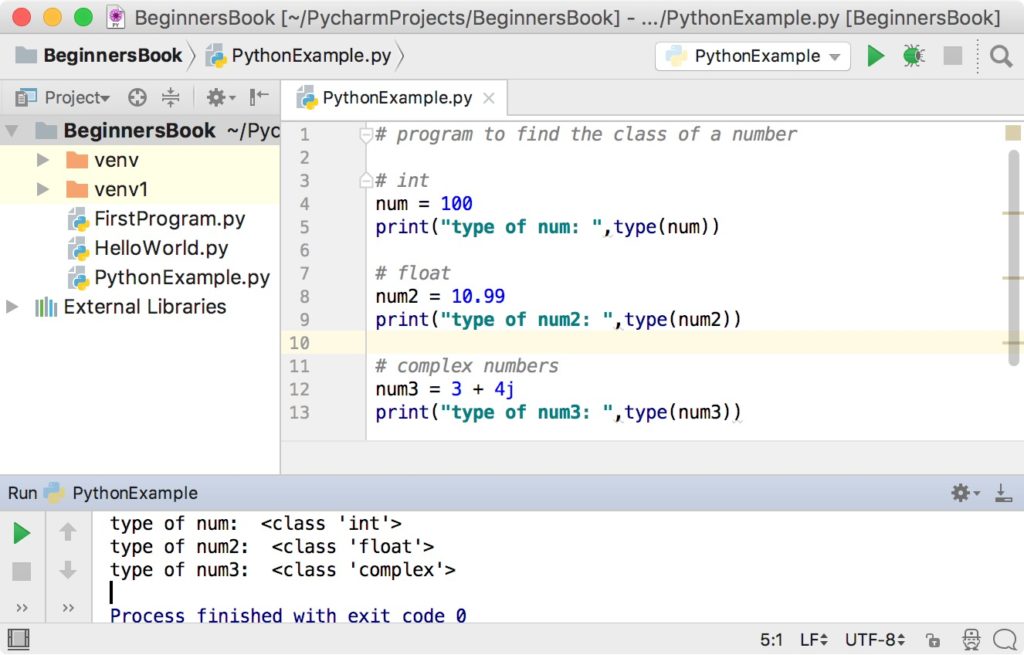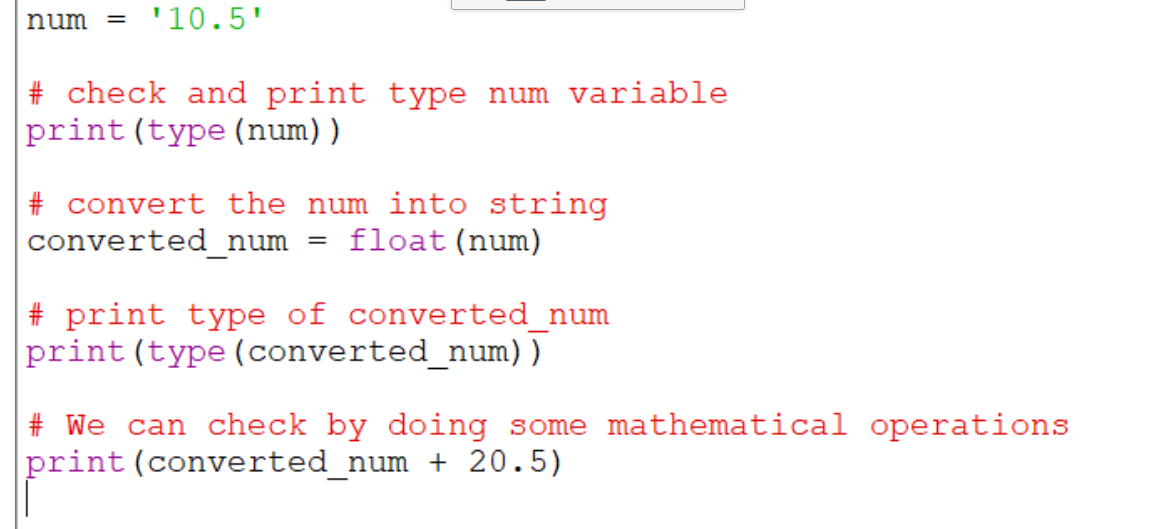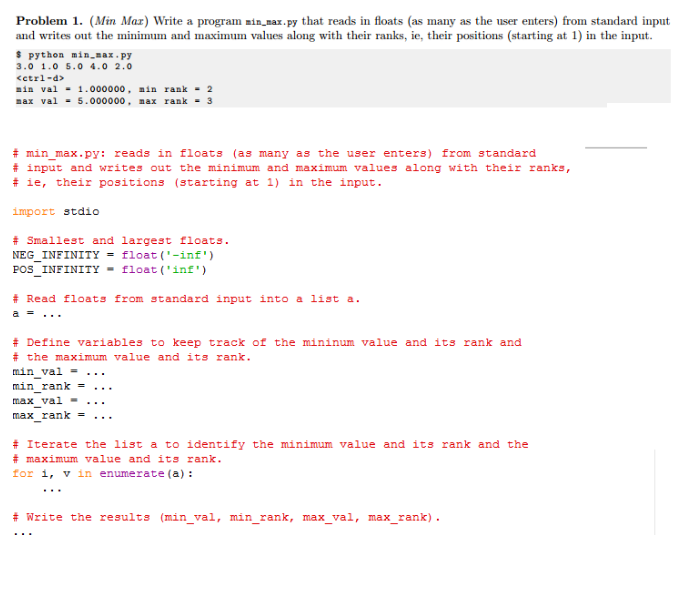


Python uses a fixed number of bytes (8 bytes) to represent floats.Python uses float class to represent real numbers.
FLOAT IN PYTHON CODE
Output: True Code language: PHP ( php ) Summary Print(isclose(x,y)) Code language: JavaScript ( javascript ) The following shows the isclose() function signature: isclose(a, b, rel_tol=1e-9, abs_tol=0.0) It provides the isclose() function from the math module returns True if two numbers are relatively close to each other. PEP485 provides a solution that fixes this problem by using relative and absolute tolerances. This workaround doesn’t work in all cases. Y = 0.3 print(round(x, 3) = round(y, 3)) Code language: PHP ( php ) One way to work around this problem is to round both sides of the equality expression to a number of significant digits. Note that the number of digits is infinite. Print(format(y, '.20f')) Code language: PHP ( php )Ġ. Internally, Python cannot use a finite number of digits to represent the numbers x and y: print(format(x, '.20f')) Y = 0.3 print(x = y) Code language: PHP ( php )

Let’s take a look at the following example: x = 0.1 + 0.1 + 0.1

'0.10000000000000000555' Code language: JavaScript ( javascript )Īs you can see, 0.1 is not exactly 0.1 but 0.10000000000000000555.īecause Python can represent some floats approximately, it will cause many problems when you compare two floating-point numbers. The following shows how Python represents the number 0.1 using 20 digits: > format( 0.1, '.20f') To see how Python represents the 0.1 internally, you can use the format() function. Internally, Python can only represent 0.1 approximately. When you use the print() function, you’ll see that the number 0.1 is represented as 0.1 exactly. If you don’t pass any argument to the float(), it’ll return 0.0 If the _float_() is not defined, it’ll fall back to _index_(). If you pass an object ( obj) to the float(obj), it’ll delegate to the obj._float_(). For example: > float( 0.1)ġ.25 Code language: JavaScript ( javascript ) The float() returns a floating-point number based on a number or a string. in binary.īecause of this, Python can only use approximate float representations for those numbers. Some numbers have a finite binary representation, but some don’t, e.g., 0.1. įor the sake of simplicity, significant digits are all digits except leading and trailing zeros.įor example, 0.25 has two significant digits, 0.125 has three significant digits, and 12.25 has four significant digits.
FLOAT IN PYTHON 64 BITS
Technically, Python uses 64 bits as follows: Unlike the integer type, the float type uses a fixed number of bytes. Python float uses 8 bytes (or 64 bits) to represent real numbers. The C double type usually implements IEEE 754 double-precision binary float, which is also called binary64. Python uses the float class to represent real numbers.ĬPython implements float using C double type.
FLOAT IN PYTHON HOW TO
Summary: in this tutorial, you’ll learn about the Python float type, how Python represents floating-point numbers, and how to test the floating-point number for equality.


 0 kommentar(er)
0 kommentar(er)
